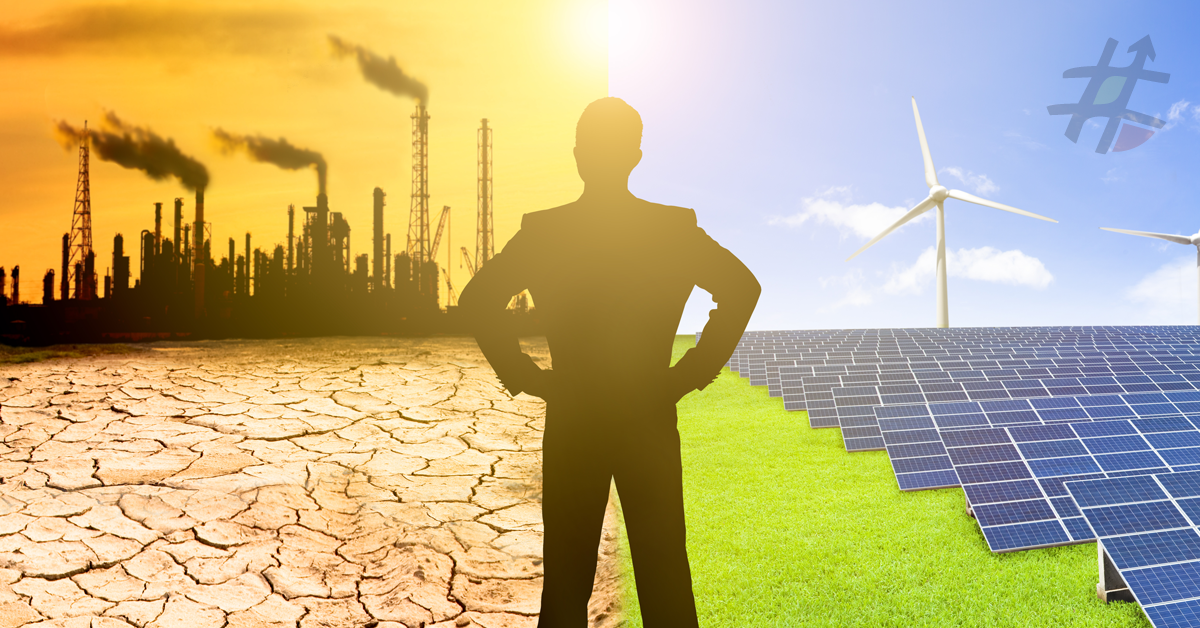Embracing Change in a New World
Not much happens in this world without the process of procurement having an impact. It’s the omnipresent reality of a global economy driven by desire and consumption, and can be a powerful weapon for beneficial change, or untold misery. We touched on this in a previous article, likening procurement officers to superheroes in our ability to create change for good.
Superheroes, however, are altruistic beings, and altruism doesn’t always get the job done. This, of course, isn’t a slight against humanity; do we think less of firefighters because they get paid? Would we have more respect for teachers if they worked for free? Receiving a pay cheque in exchange for a positive contribution to society does not lessen the act.
And now, when it comes to adjusting our procurement behaviour to fight climate change, altruism is no longer the sole motivator. According to a BSR report, Climate and Supply Chain, The Business Case for Action, business have already experienced the negative impacts of climate change. Infrastructure, such as roads or plant equipment, no longer able to cope with new baseline temperatures and weather extremes, and consumers continuing to alter their consumption habits to lessen their impact on the environment.
It’s now vital that businesses adjust their procurement habits to stay viable and attractive. Here’s how.
Focus on the Greatest Impact
BSR™ is a global non-profit organization that works with its network of more than 250 member companies and other partners to build a just and sustainable world. They recommend that companies address climate risks in their supply chains by focusing on where they have the greatest impact and influence. BSR™ proposes three steps to begin the journey:
- Consider a broad range of climate risks and then prioritise parts of the supply chain that are most at risk.
- Implement supply chain actions by collaborating with internal procurement teams and suppliers and develop measurable targets.
- Evaluate the impact of supply chain actions and adjust programs and goals over time.
It’s a starting point that allows companies to fulfil supply chain objectives while integrating climate risks. In addition to protecting our supply chains against an increasingly hostile climate, we can be more proactive and enact change through our corporate buying power.
Easier said than done, no doubt. Here, large businesses are at a disadvantage because they need clear cost-benefit metrics before implementing change. Because energy usage is easy to measure, this is generally where big businesses look first to see if switching to a greener energy supplier is worthwhile. Trends in the UK suggest it is.
According to Carbon Brief, energy efficiency has contributed to a decline in energy consumption in the UK by 103 TWh (terawatt-hours) between 2005 and 2019. It’s a massive drop in their carbon footprint, but also huge savings in energy outlays. To do more, though, we need to know more. This comes down to reporting.
Scoping your Procurement Methods
You can’t improve what you haven’t measured. The Greenhouse Gas (GHG) reporting standards have created the concept of scoping to help determine precisely where emissions are being generated.
- Scope 1 emissions are those most controllable and a likely starting point for action, but capability is often limited by available technologies and processes.
- Scope 2 emissions include electricity purchased by the company and involve determining whether switching to a greener supplier is worthwhile.
- Scope 3 emissions cover those that are not directly controlled by the company, such as the use of purchased materials or emissions from service contracts. These are difficult to mitigate but enacting green procurement policies creates demand that triggers supply. If the market wants it, the suppliers will come.
Change is Inevitable
Consumers want change. The recent climate strikes and additional planned strikes are indication enough. But if stats are your thing, have a look at this: CIO reports that 48% of consumers in the US would probably or definitely change their consumption habits if it had a positive impact on the environment. Talk is cheap, I hear you say. Well, I’m not done. In the US in 2018, consumers spent $128.5 billion on FMCG (fast-moving consumer goods) products. This has led to a 20% increase in sustainable product sales, and a compound average growth rate four times greater than conventional products. CIO predicts that by 2021, consumers will spend $150 billion on sustainable goods. Consumers aren’t just talking the talk. They’re walking the walk.
Change is inevitable, and many businesses will be caught on the hop and miss out on vast opportunities. Now is the time to adjust your procurement practices to reflect the world we live in. Comprara can help. Get in touch with us now and we’ll work with you to make a difference through the power of procurement.



